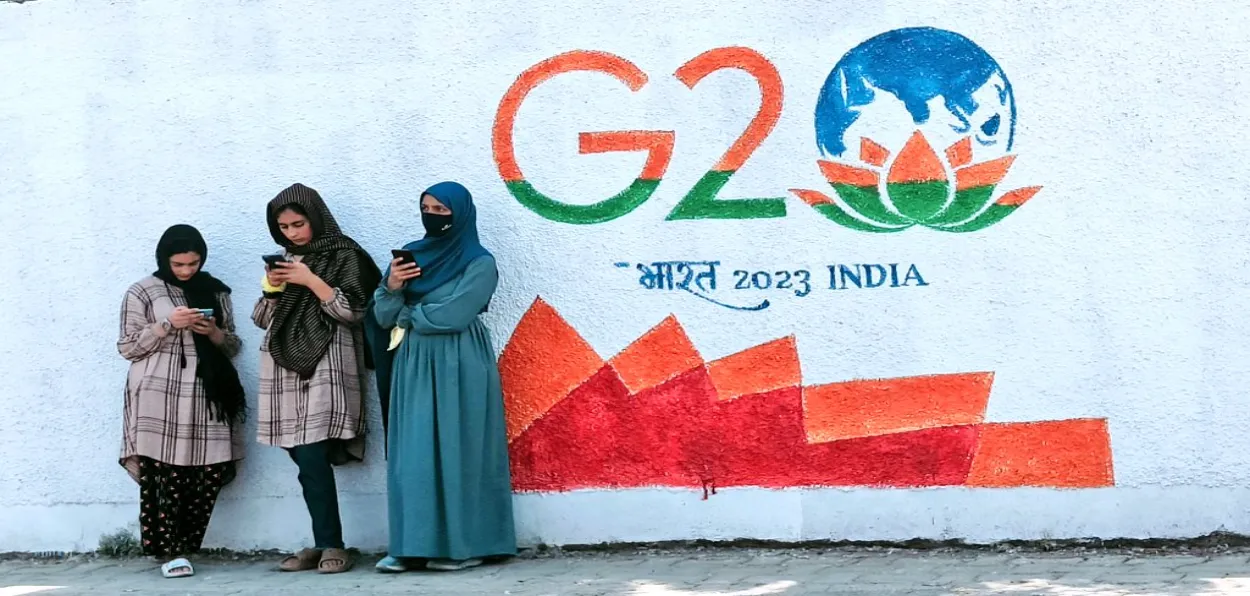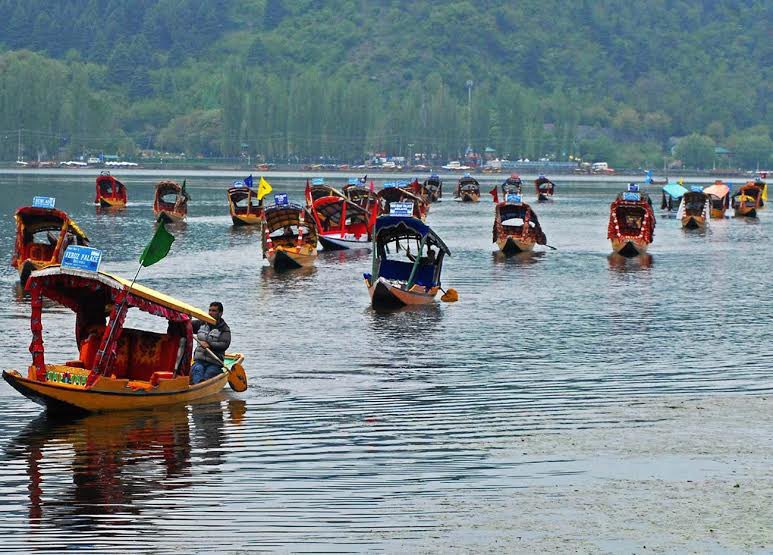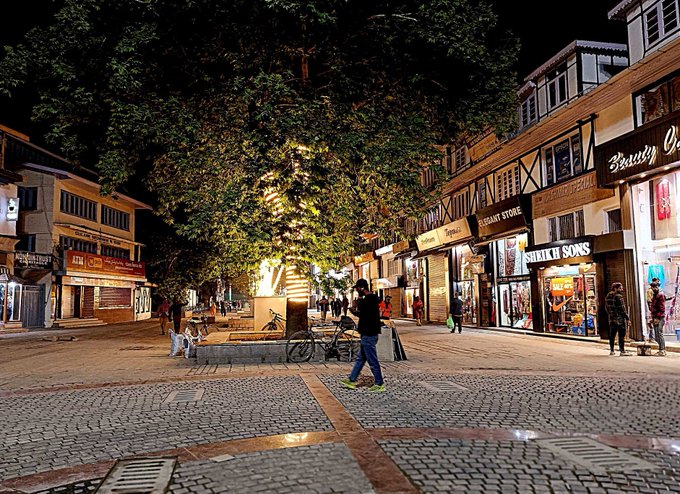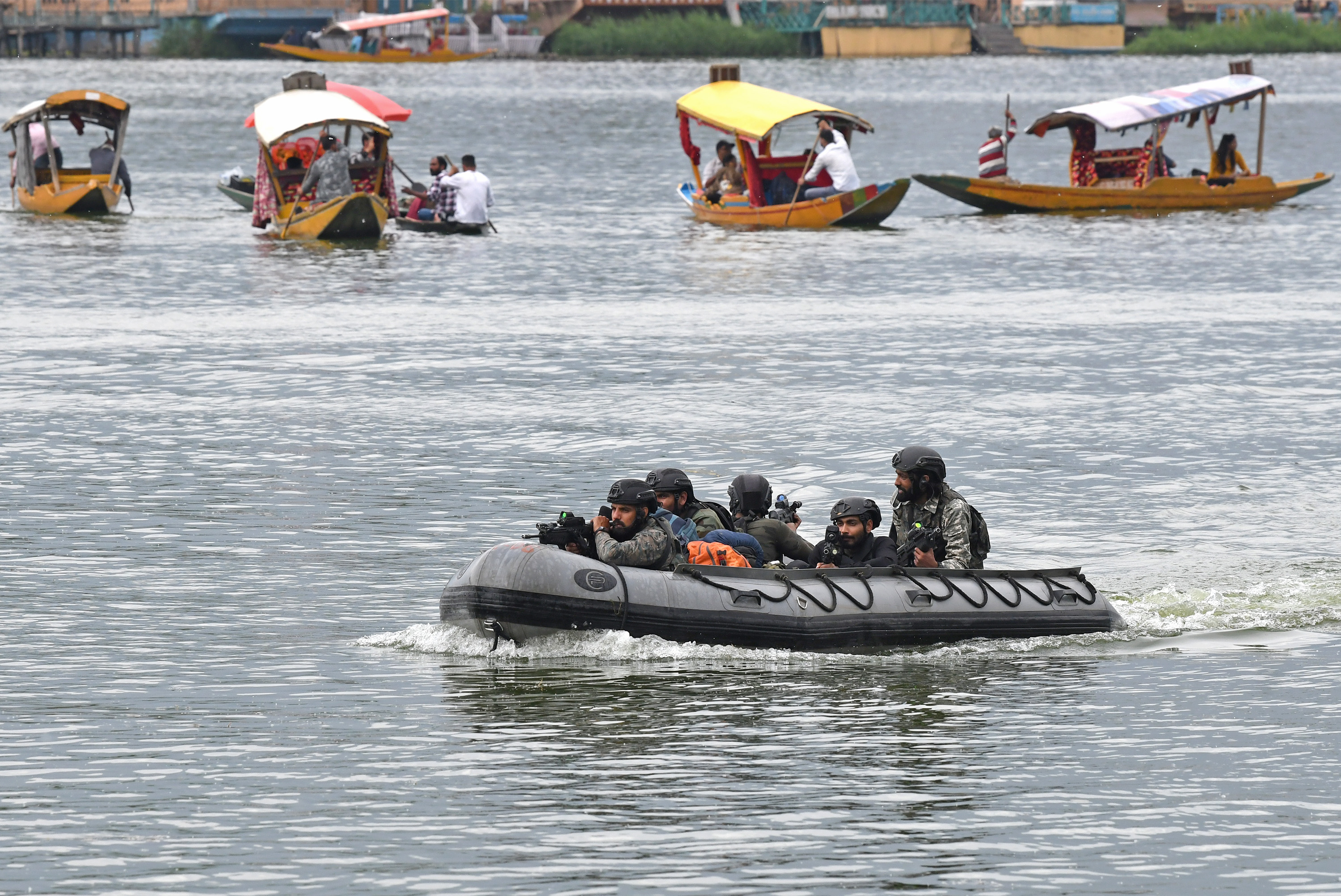
Aasha Khosa/New Delhi
It will be after the gap of 40 years that Srinagar, the ancient city located on the banks of river Jhelum, will play host to an international event of significance. The city is all decked up to welcome the G-20 representatives for a two-day huddle of the working group on Tourism on May 23, and, this is a game changer.
Forget about the event leading to any substantive economic gains or impact on tourism – already several infra projects are underway and the influx of tourists has increased manifold in recent years to the Valley – it will change the image of Kashmir in the eyes of the world and elevate the self-image of the people of Kashmir.
For the people of J&K, the ‘visitors’ – a term used by locals for guests and tourists – are not coming to express their sympathies to the victims of terrorism or to judge India’s handling of a situation arising out of Pakistan’s training and arming local youth for the armed insurgency.
After a long time, the ‘visitors’ are coming to Kashmir for serious deliberation aimed at changing the world and making it a better place for all, including the people of Kashmir, who saw death, destruction, and social turmoil on an unprecedented scale for 30 years.
The Kashmiris are happy to see the G-20 members coming to their land to soak themselves in their culture and carry back home positive vibes. The planned showcasing of the Kashmiri traditions like burning of ‘isband’ (Peganum harmala seeds burnt on cinders on special occasions), Rouf artists performing the traditional Kashmiri folk dance, bhand pather (Kashmiri folk street drama), etc., and above all the scenic splendor is bound to erase the stereotypical image of a burning Kashmir.

Shikaras in Dal Lake are all decked up for the G-20 dignitaries
All this combined with the ongoing massive developmental projects that visitors will be briefed about will help in reimaging J&K.
For the uninitiated readers, the 40-year-old event mentioned above is an ODI (One Day International) cricket match played between India and New Zealand in Srinagar in October 1983.
The ODI was played at the Chinar-fringed Sher-e-Kashmir Stadium of Srinagar. As per a premeditated plan, a group of Kashmiri youth raised anti-India slogans, disrupted the match, and damaged the pitch. The match was somehow completed and some ‘miscreants were rounded up’ for vandalism by the police.
In hindsight, the incident was a precursor to the turmoil that engulfed Kashmir six years later and lasted nearly 30 years. Analysts believe the anti-India demonstrations at the cricket match were the trailer of what Pakistan was planning.
Soon, Islamabad unleashed its diabolic plan of using the disgruntled Kashmiri youth. The youth left for POK camps in hordes and got trained in the use of arms and sabotage techniques. The Pakistani Army and ISI armed them to the teeth before sending them home to wage an armed rebellion.
Both Srinagar and Delhi missed the early signs of rebellion at the ODI and dismissed the vandalism as an aberration. In denial, both governments were caught unawares when hundreds of militants descended from across the LOC and launched a full-scale insurgency and proxy war for Pakistan, six years later.

Refurbished Polo View Market - Srinagar's new selfie point
From 1989 till 2019 August, Kashmir was in the news for all the wrong reasons. When the Indian forces launched an operation against terrorists, the Pakistani propaganda mills went into overdrive.
During this period, global human rights activists, “peaceniks” and self-styled observers from across India and outside would come to Kashmir with or without the knowledge of the authorities.
Their itinerary included a visit to the office of the leaders of the now-defunct All Parties Hurriyat Conference – a political front for the pro-Pakistan terrorist group) houses of many insurgent leaders, and meetings with common people. All this helped portray India as an abusive nation and Kashmir a land of sad people.
The experience was overwhelming for many like UK’s Labour MP Gerald Kaufman, who was the shadow foreign minister. He came to Kashmir for an assessment of the situation for his party that had the support of Pakistani expatriates.
Kaufman told this reporter that he was besieged by people wherever he went. People handed him over applications seeking the release of their sons from joint interrogation centers where the suspected terrorists were lodged. Some even asked him to mend their drains and lanes!
Kaufman is no more today. He told me that he was shocked to see people’s reactions. What he didn’t know was that common people mistook him for “UN Foreign Minister”, for they didn’t understand the concept of ‘shadow’ minister of the UK.
Such visits were leveraged by an active group of separatist managers who brought people to such important visitors to push up anti-India rhetoric for Pakistan and to paint the picture of doom and gloom.
Then came an era when the foreign envoys of Muslim countries were formally invited by the Indian government to Kashmir to understand the situation. This helped in calling Pakistan’s bluff on Kashmir and the allegation that Indian forces were killing Muslims.
These delegations visited the Army cantonments, and Raj Bhawan, and even met politicians and public representatives.

Marcos team of the Indian Navy patrolling the Dal lake on the eve of G-20 meeting in Srinagar
However, all these visits ended up magnifying the grief of Kashmir and sending a reminder to the people that they are sad and in perpetual grief.
The event of the G-20 meeting is changing the optics and vibes of Kashmir. Already there is a huge excitement among the young Kashmiris about the events. They have been visiting the refurbished markets and clicking selfies.
The Dal Lake looks cleaner and young men and women are making vlogs on how Kashmir is changing. Lt Governor Manoj Sinha held a meeting of civil society members to discuss the preparedness for the meeting.
ALSO READ: Article 370 going has ended apartheid
Surely J&K government wants to put its best foot forward before the representative of 20 most powerful nations in the world and send a clear message that J&K’s status as India territory is final.
(The writer has reported from Kashmir for ten years during the peak of insurgency)
